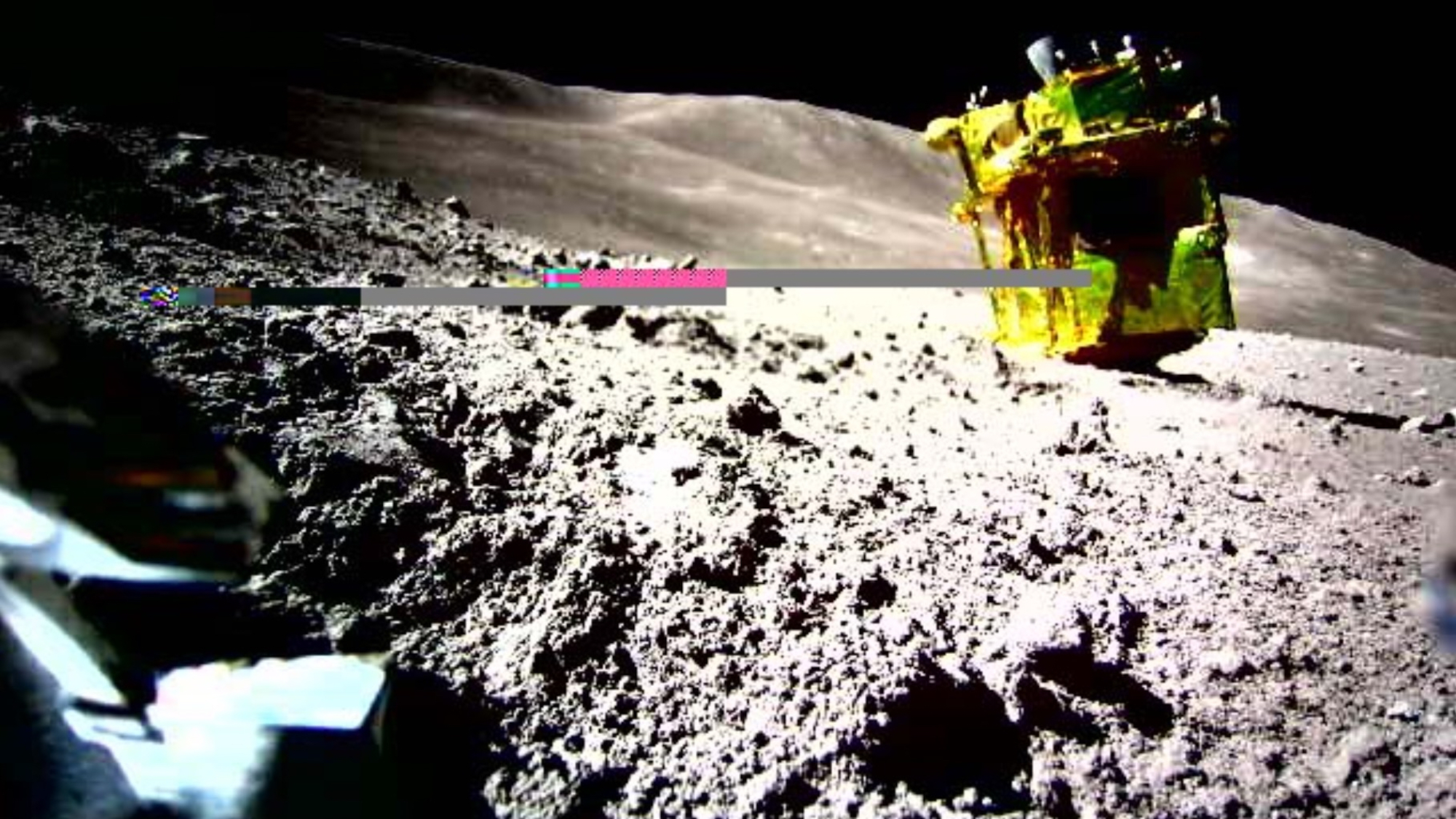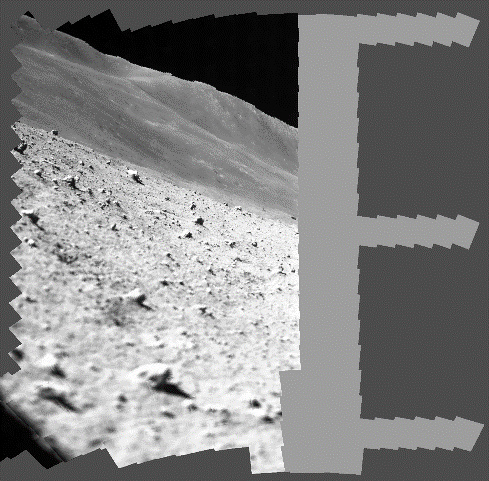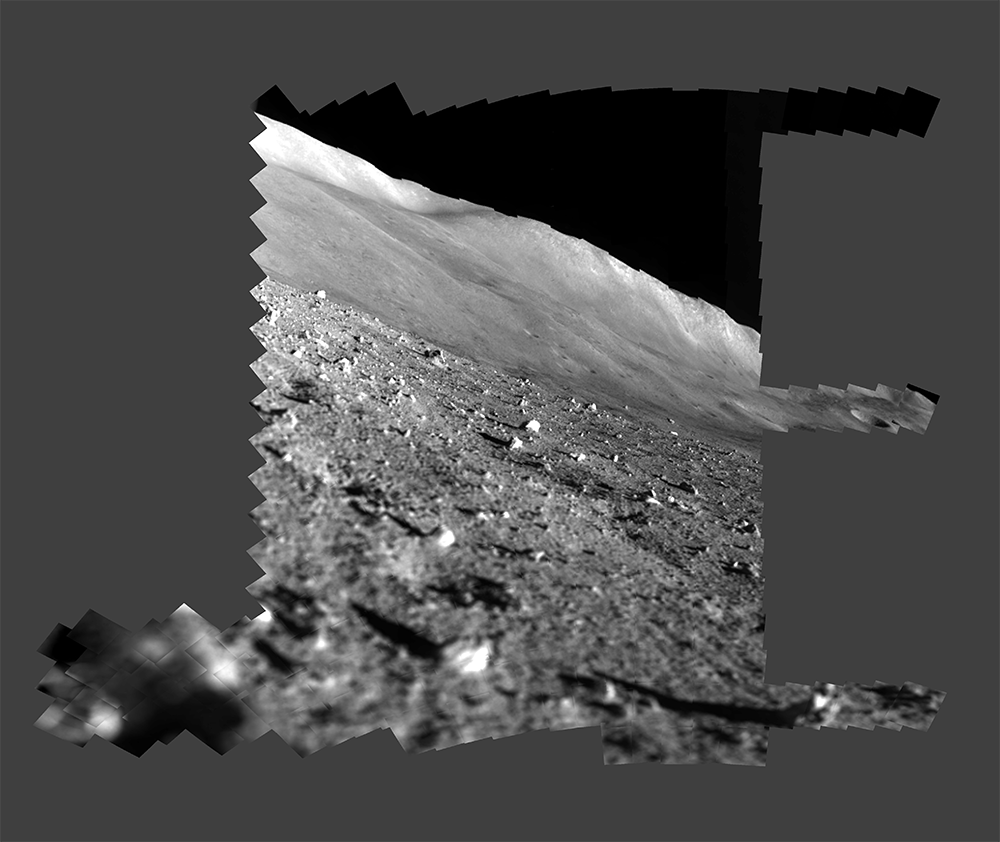
SLIM, Japan’s historic moon lander, is officially powered down in preparation for a brutal, likely fatal lunar nighttime lasting around 14.5 days. Before drifting off to what very probably will be a permanent slumber, however, the small craft beamed back a few final glimpses of its new home to mission control at the Japanese space agency, JAXA.
[Related: Japan’s SLIM lunar lander stuck the landing—upside down.]
“Last night (January 31st to February 1st), we sent a command to turn on the probe’s communication device just in case, and when there was no response, we confirmed that SLIM had entered a dormant state,” reads a machine translated message from JAXA posted to X on Thursday. “This is the last scene taken by SLIM with its navigation camera before dusk.”
After completing operation from 1/30 ~ 1/31, #SLIM entered a two week dormancy period during the long lunar night 🌚. Although SLIM was not designed for the harsh lunar nights, we plan to try to operate again from mid-February, when the Sun will shine again on SLIM’s solar cells. pic.twitter.com/JO4ZgDaOxo
— 小型月着陸実証機SLIM (@SLIM_JAXA) February 1, 2024
Japan’s Smart Lander for Investigating Moon, or SLIM, first ran into trouble during its descent on January 19, when its main engines malfunctioned approximately 162-feet above the lunar surface. The resultant loss of thrust threw the lander off kilter, and while it arrived intact, it did so nosedown with SLIM’s solar panels faced westward. Engineers worried the lander would be unable to generate enough power to continue communicating with Earth for very long, and SLIM subsequently went silent only a few hours after its arrival—although its two, tiny autonomous robots ejected unscathed to begin their own surveys.

Almost 10 days later, however, the sun’s return provided SLIM enough juice to reboot itself and commence a few more operations, including using its Multi-Band Camera to scan the chemical composition of its lunar surroundings. JAXA researchers are currently analyzing all the data SLIM relayed back to Earth, paying specific attention to the detection of olivine, which “will help solve the mystery of the origin of the moon,” JAXA officials said in a statement released on February 1.
SLIM’s final glimpse of the moon shows a darkening landscape as it enters its lengthy lunar night, when temperatures plummet as low as a balmy -208 Fahrenheit. It’s interesting to compare the last photo with SLIM’s two previous snapshots taken immediately after touchdown on January 19, as well as after coming back online ten days later. Viewed side-by-side, the triptych highlights an out-of-frame sun’s slow descent across the moon’s horizon as it casts lengthening shadows across the lunar landscape and regolith. (Pictured below: From left to right: SLIM’s images of the lunar surface from Jan. 19 to Feb. 1. Credit: JAXA/Takara Tomy/Sony Group Corporation/Doshisha University.)



But although it’s very likely SLIM’s official end to a monthslong journey, JAXA isn’t shutting down operations just yet. After all, spacecraft often prove far more resilient than initially believed—just ask the NASA teams behind Voyager or Ingenuity.
“Although SLIM was not designed for the harsh lunar nights, we plan to try to operate again from mid-February, when the Sun will shine again on SLIM’s solar cells,” JAXA posted to X on Thursday.
The post This may be SLIM’s farewell transmission from the moon appeared first on Popular Science.
Articles may contain affiliate links which enable us to share in the revenue of any purchases made.
from Popular Science https://ift.tt/elLJKkR










0 Comments